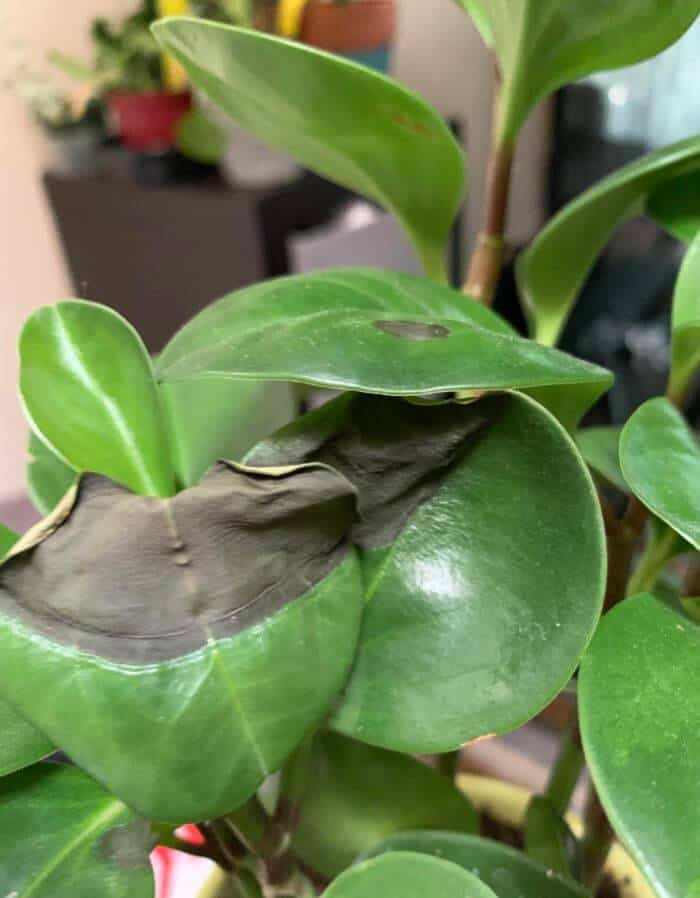Last Updated on June 27, 2023 by a Friendly Gardener
Peperomia plants are among the easiest to cultivate and require very little maintenance. Boasting a compact size with pretty foliage, it is an ideal plant for homes and offices alike. But should you notice your peperomia leaves turning black, fear of losing one of your favorite plants can stimulate worry that your plant may be dying or have a serious health issue.
Among the common causes of this plant’s foliage turning black is overwatering. Excessive moisture can permit fungal infections or root rot to set in and when left unattended can spell the beginning of the end for your plant. When the foliage turns black, your plant has a serious health issue and most probably has been suffering for some length of time.
Why Are My Peperomia Leaves Turning Black?

Repeated overwatering can be the cause of various health problems. Black leaves however do not happen overnight. Black foliage implies that your plant has been neglected for some time. Principal causes of black foliage include:
- Overwatering
- A lack of drainage
- Improper soil blend
- Insufficient light
- Pests
- Improper environmental temperature
- Improper humidity levels
- Direct sunlight exposure
- Excessive Feeding
- Disease
Overwatering
Many of us overwater out of an excessive need to care for our plants. If a peperomia plant is left to sit in water, leaves may turn yellow, wilting, and diseased root systems. Left unattended, leaves will begin to turn black. Peperomia is a tropical plant with foliage that stores water much like succulents, so they require less water than other common houseplants.
What to Do
Repot your plant if the soil is soggy. First prune trim off all damaged plant parts including stems, leaves, and roots. Select a new pot, perhaps in terracotta and with drainage holes. Place your plant in a fresh potting mix and position it in bright indirect light to recover. Do not feed until new growth appears.
If blackened leaves are extensive, the problem is quite severe. Consider trimming healthy parts and propagating from a healthy stem.
A Lack of Drainage
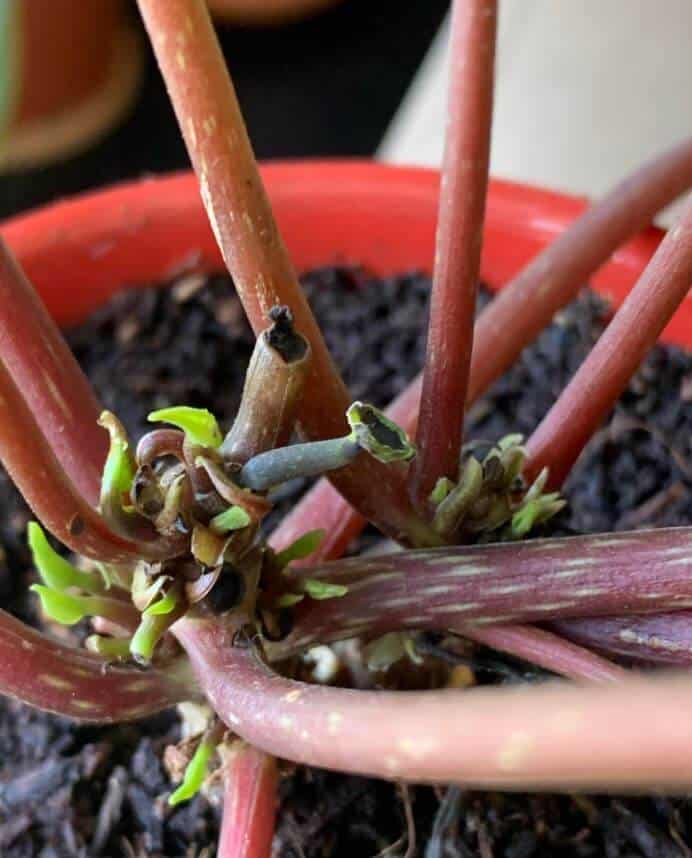
Without good drainage, your plant will suffer the same problems associated with overwatering. You may not be overwatering, but your plant may have a drainage problem. Pots without adequate drainage holes are especially susceptible.
What to Do
Acquire a new pot with drainage holes. Place a layer of pebbles in the bottom or gravel beneath potting soil.
Improper Soil Blend
Garden or yard soil is often too heavy for indoor plants, especially for peperomia. A heavy soil blend will retain more moisture causing overwatering. If you do not test soil bed dryness before watering, black spots will begin and eventually turn the entire plant black.
What to Do
Repot your plant with loose well-draining potting soil that aids in maintaining a balance between drainage and water retention. If using potting soil, add 50% perlite to guarantee drainage and aeration.
Insufficient Light Exposure
Peperomia without sufficient light will suffer. If your peperomia does receive bright indirect light it will be unable to photosynthesize, and will not produce chlorophyll which will cause foliage discoloration and may progress until leaves are black.
What to Do
Place your peperomia near a window but not directly on the windowsill to prevent foliage from scorching unless you have a sheer curtain as a filter. If you do not have access to sufficient natural light, use a grow light for your plant.
Pests
Scales, spider mites, aphids, thrips, and more can attack your plant. With a pest infestation, insects can suck the plant’s nutrients out leaving a weakened peperomia with discolored leaves that eventually turn black.
What to Do
Remove visible bugs manually. Rinse your plant off with a jet spray of water. Treat your plant with an organic solution such as neem oil or insecticidal soap.
Improper Environmental Temperature
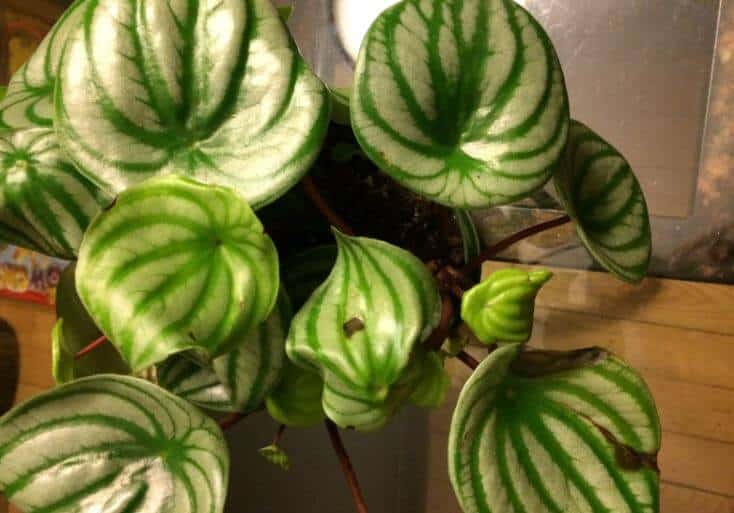
Black leaves can signal a problem with the environmental temperature. Fluctuations in temps can also stress this species.
What to Do
Keep peperomia away from heating and cooling vents and units. Maintain a comfortable indoor room temperature in the 65° to 80° F. range.
Improper Humidity Levels
Peperomia, as tropical plants need humidity levels between 40% and 50%. Anything lower can stress this species.
What to Do
If your home has dry air, use a space humidifier or a pebble tray to raise humidity levels.
Direct Sunlight Exposure
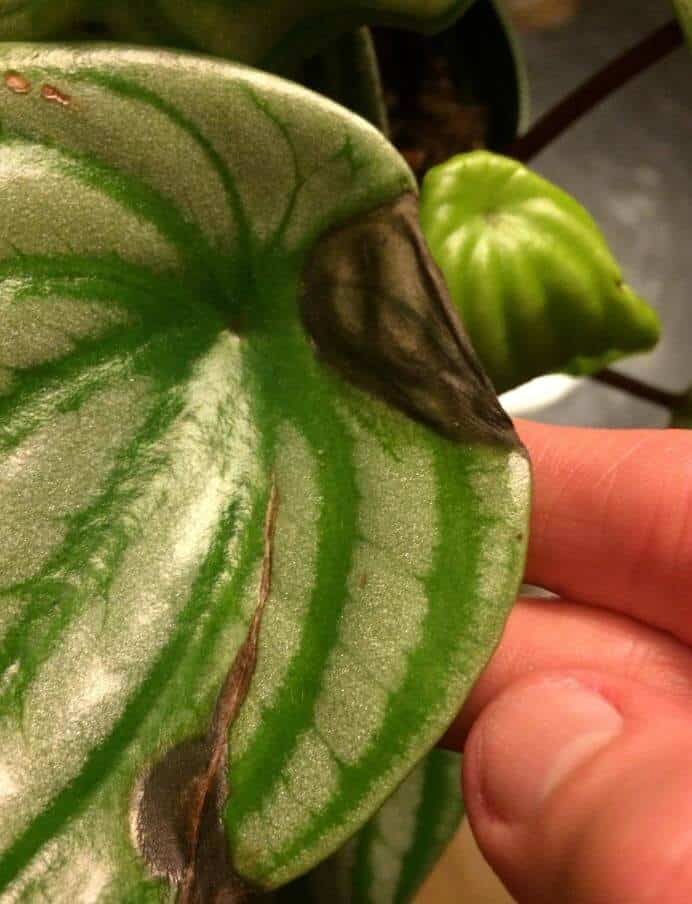
Peperomias are sensitive to direct sunlight exposure. If you place this species directly in the window, leaves can become scorched. Scorching can turn leaves black.
What to Do
Do not place a peperomia in direct sunlight without a filter such as a sheer curtain. For outdoor peperomias, choose a shady spot. Offer your plant a spot with bright, but rigorously indirect light.
Excessive Feeding
These plants are considered light feeders, so they do not require much fertilization. Excessive fertilization can cause salt buildup in the soil which will damage root systems.
What to Do
Do not fertilize peperomia in the winter when they rest. Use a balanced liquid fertilizer during the growing season. It should be diluted to half-strength. If your plant is suffering from excessive feeding, stop feeding it, and flush out the soil bed allowing excess water to drain completely. Give your plant time to recover.
Disease and What to Do
Leaf spots can cause the formation of black spots on your plant. Cercospora Leaf spot will cause black bumps on the bottoms of leaves. Spray your plan’s foliage on both sides with a fungicide. Rhizoctonia leaf spots will cause irregular mushy black spots on foliage. Infected leaves need to be removed and destroyed. Finally, Phyllosticta leaf spot will cause dry black spots on foliage beginning at the edges and moving inward. Infected leaves should be removed and destroyed.
Preventing Black Leaves on Peperomia
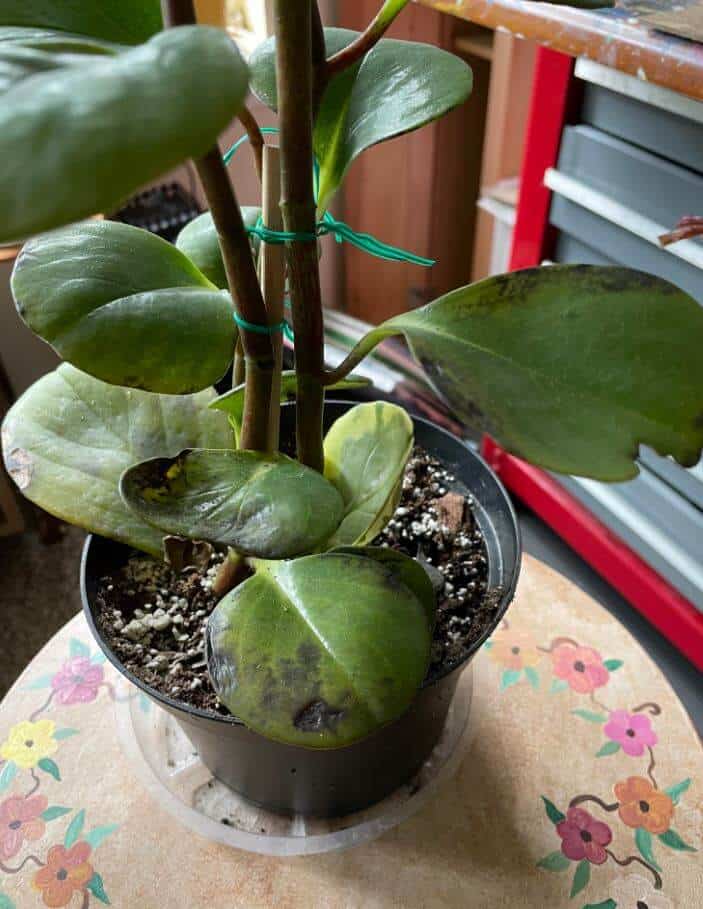
To prevent black leaves from developing on your peperomia:
- Provide bright indirect light.
- Water sparingly as these plants require very little water.
- Use a loose, well-draining potting soil blend amended with perlite.
- Feed sparingly monthly during the growing season in spring and summer.
- Maintain average indoor temperatures and humidity levels.
- Treat your plant monthly with a light spray of organic neem oil to prevent pests and diseases.
- Black leaves, should they develop, need to be pruned off.

